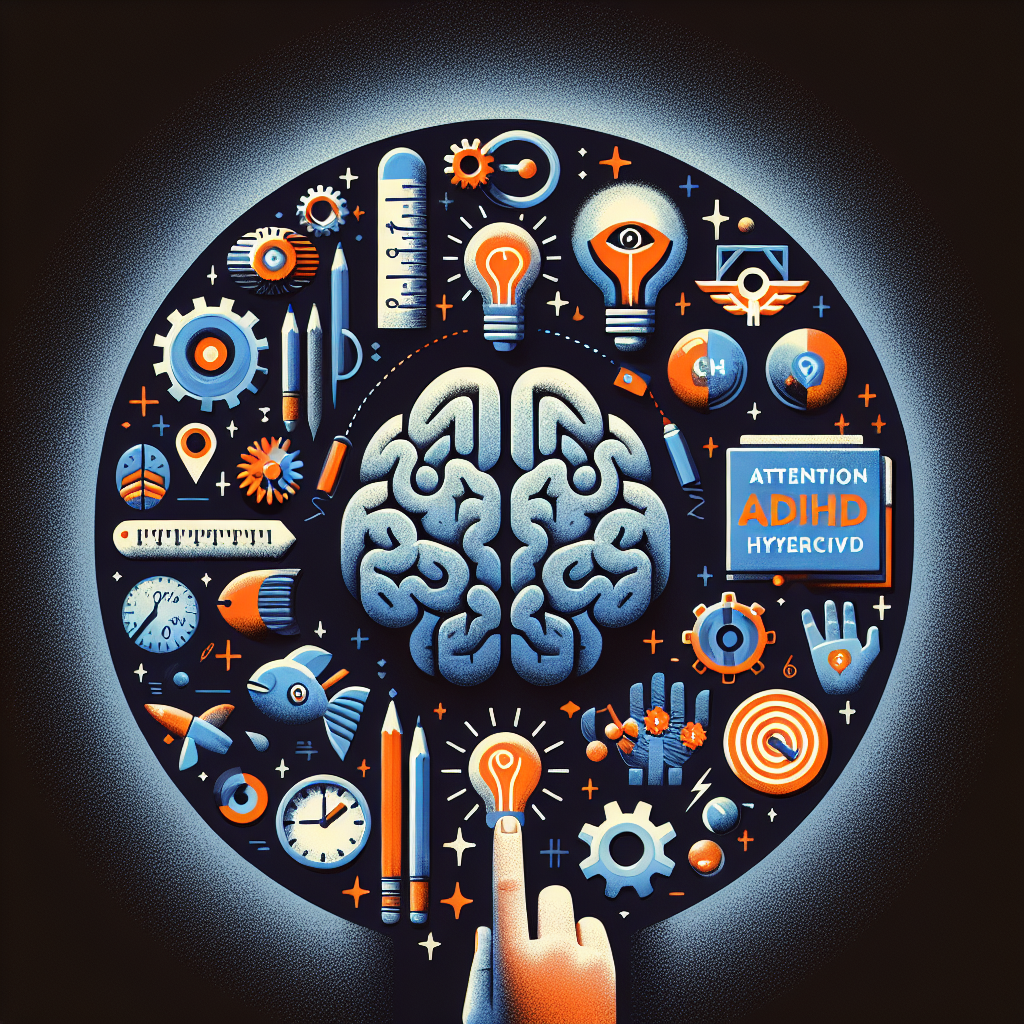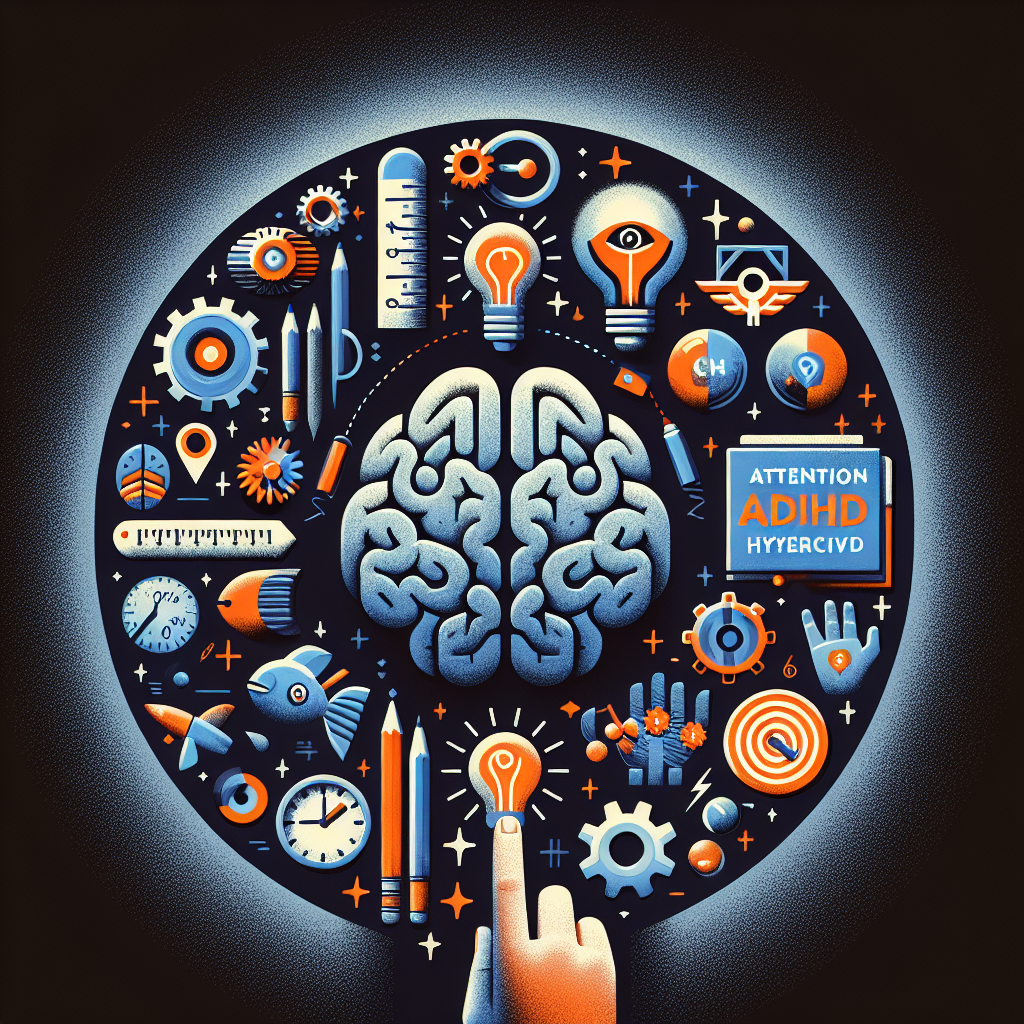Have you ever wondered what ADHD is and what causes it? Attention-deficit/hyperactivity disorder, commonly known as ADHD, is a neurodevelopmental disorder that affects both children and adults. It is characterized by symptoms such as inattention, hyperactivity, and impulsivity, which can have a significant impact on daily functioning and overall quality of life. While the exact cause of ADHD is still unknown, researchers believe that a combination of genetic, environmental, and neurological factors contribute to its development. In this article, we will explore the causes and conditions associated with ADHD, shedding light on this complex disorder that affects millions of individuals worldwide.
Understanding ADHD
Attention Deficit Hyperactivity Disorder (ADHD) is a neurodevelopmental disorder that affects both children and adults. It is characterized by symptoms of inattention, hyperactivity, and impulsivity. ADHD can have a significant impact on various aspects of an individual’s life, including academic performance, social interactions, and overall well-being. In this comprehensive article, we will delve into the definition, prevalence, symptoms, diagnosis, causes, conditions associated with ADHD, as well as its impacts on different age groups and treatment options.
Definition of ADHD
ADHD is a condition that affects the brain’s executive functions, which are responsible for organizing, planning, and controlling impulses. It is important to note that ADHD is not simply a result of laziness or a lack of discipline. Individuals with ADHD struggle with regulating their attention, activity levels, and impulses, which can impact their daily functioning and quality of life.

Prevalence of ADHD
ADHD is one of the most common neurodevelopmental disorders, with prevalence rates varying across different age groups and populations. According to the Centers for Disease Control and Prevention (CDC), approximately 6.1 million children in the United States have been diagnosed with ADHD. Boys are generally more likely to receive a diagnosis than girls, with a ratio of about 3:1. It is important to recognize that ADHD persists into adulthood for many individuals, with estimates suggesting that about 4-5% of adults worldwide are affected by this condition.
Symptoms of ADHD
ADHD is characterized by three main types of symptoms: inattention, hyperactivity, and impulsivity. It is essential to remember that not every person with ADHD exhibits all three symptom types, and their severity can vary greatly among individuals.
Inattention symptoms
Individuals with inattention symptoms struggle with maintaining focus and paying attention to detail. They may have difficulty staying organized, following instructions, and completing tasks. It can be challenging for them to sustain mental effort, and they often appear forgetful or easily distracted. These symptoms can significantly impact academic or occupational performance and lead to frustration or low self-esteem.
Hyperactivity symptoms
Hyperactivity symptoms manifest as excessive restlessness and an inability to sit still for prolonged periods. Affected individuals may feel a constant need for movement or engage in fidgeting, tapping, or squirming behaviors. They may have difficulty engaging in quiet activities and often interrupt or talk excessively. Hyperactivity can interfere with daily activities, such as classroom participation or cooperative play.
Impulsivity symptoms
Impulsivity symptoms refer to acting without thinking or considering the consequences. Individuals with impulsivity symptoms may frequently interrupt others, struggle with turn-taking, or struggle to withhold immediate responses. They might engage in impulsive behaviors such as excessive risk-taking, impulsive spending, or engaging in dangerous activities. Impulsivity can interfere with social relationships, decision-making, and personal safety.

Diagnosing ADHD
To receive an ADHD diagnosis, individuals must meet specific criteria outlined in the Diagnostic and Statistical Manual of Mental Disorders (DSM-5). Diagnosis typically involves a comprehensive evaluation, including medical and psychological assessments.
Diagnostic criteria
The DSM-5 outlines specific criteria for diagnosing ADHD in both children and adults. These criteria include the presence of symptoms that significantly impair functioning and are inconsistent with developmental levels or age expectations. Symptoms should also be observed across different contexts, such as home, school, or work environments.
Medical evaluation
In the diagnostic process, a medical evaluation is essential to rule out other potential causes for symptoms that may mimic ADHD. Factors such as thyroid dysfunction, sleep disorders, or certain medications can contribute to attention and hyperactivity difficulties. An evaluation may involve a physical examination, medical history review, and laboratory tests if necessary.
Psychological testing
Psychological testing, such as rating scales and interviews, aids in gathering comprehensive information about the individual’s symptoms, behavior patterns, and functional impairments. Teachers, parents, and other relevant individuals are often involved in providing observational data to support the diagnostic process. A thorough assessment helps differentiate ADHD from other mental health conditions and guides in developing appropriate treatment plans.
Causes of ADHD
The exact cause of ADHD is still not completely understood, but extensive research suggests a combination of genetic, neurological, and environmental factors contribute to its development. It is likely that ADHD is a complex disorder resulting from an interplay between various underlying causes.
Genetic factors
Studies have shown that ADHD has a strong genetic component, with a heritability estimate of around 76%. This suggests that genetics play a significant role in determining an individual’s risk for developing ADHD. Several genes related to brain function, the dopamine system, and neurotransmitters have been implicated in ADHD.
Brain structure and functioning
Research using brain imaging techniques has identified differences in the brain structure and functioning of individuals with ADHD compared to those without the condition. Areas of the brain responsible for executive functions, attention regulation, and impulse control show variations in volume and activity.
Environmental factors
Certain environmental factors may also contribute to the development of ADHD. Maternal smoking during pregnancy, exposure to toxins like lead, premature birth, low birth weight, and prenatal alcohol or drug exposure have been associated with an increased risk of ADHD. Additionally, early life stress, parenting style, and socioeconomic factors can also impact the expression and severity of ADHD symptoms.

Conditions Associated with ADHD
ADHD often co-occurs with other psychiatric disorders, referred to as comorbid conditions. These conditions can complicate the diagnosis and treatment process, requiring a comprehensive and individualized approach.
Oppositional defiant disorder (ODD)
ODD is a commonly co-occurring disorder with ADHD, characterized by a pattern of persistent, defiant, and hostile behaviors towards authority figures. Children with ADHD and ODD may display frequent and intense temper tantrums, argumentativeness, and an overall defiant attitude. This combination can present unique challenges in both home and school settings.
Conduct disorder (CD)
CD is a more severe condition that may co-occur with ADHD. It involves more significant aggression and rule-breaking behaviors, such as physical fighting, vandalism, or theft. Adolescents with both ADHD and CD may exhibit an increased risk of negative outcomes, including legal issues or substance abuse.
Anxiety and mood disorders
Anxiety and mood disorders, such as generalized anxiety disorder or depression, are commonly associated with ADHD. These conditions can exacerbate ADHD symptoms and significantly impact an individual’s emotional well-being, academic or occupational functioning, and overall quality of life. It is crucial to address both ADHD and comorbid conditions for effective treatment outcomes.
ADHD in Children
ADHD often presents during childhood, with symptoms becoming more apparent as developmental demands increase. Understanding how ADHD impacts children is essential for effective intervention and support.
Developmental stages
Children with ADHD may experience developmental delays in various areas, such as language, social skills, and emotional regulation. It is crucial to provide appropriate interventions and accommodations to address these areas of concern, ensuring children can reach their developmental milestones.
Impact on academic performance
Academic performance can be significantly affected by ADHD symptoms, as children may struggle with sustained attention, organization, and completing assignments. These challenges can lead to lower grades, increased frustration, and reduced motivation. Early identification and implementation of targeted interventions within educational settings are essential to support academic success.
Social and emotional challenges
Children with ADHD often face social difficulties, including making and maintaining friendships, understanding social cues, and appropriately regulating emotions. They may experience rejection or isolation, which can impact their self-esteem and overall well-being. Providing social skills training, individual counseling, and fostering a supportive environment are crucial for improving social interactions and emotional well-being.

ADHD in Adolescents
Adolescence brings unique challenges for individuals with ADHD, as hormonal changes, increased independence, and academic demands intersect.
Puberty and hormone changes
During puberty, hormone fluctuations can sometimes exacerbate ADHD symptoms or contribute to emotional dysregulation. It is important for healthcare providers, educators, and parents to be mindful of these changes and provide appropriate support and understanding.
Learning difficulties and vocational concerns
Teens with untreated or poorly managed ADHD may experience increased difficulties with academic performance, specifically as the coursework becomes more challenging. Poor executive functioning skills can also impact their ability to plan, prioritize, and complete tasks, potentially affecting their future academic and vocational paths. Access to specialized educational support, vocational counseling, and career guidance can significantly benefit adolescents with ADHD.
Risk-taking behaviors
Adolescents with ADHD are more prone to engage in risk-taking behaviors, such as substance abuse, unsafe sexual behavior, or reckless driving. Impulsivity and difficulties in evaluating consequences can contribute to these risky choices. Education, counseling, and the development of self-regulation strategies can help mitigate these behaviors and promote healthier decision-making.
ADHD in Adults
Adults with ADHD often face unique challenges, as many may have gone undiagnosed or received a late diagnosis.
Late diagnosis and ongoing challenges
ADHD can persist into adulthood, but many individuals remain undiagnosed until later in life. Adults with undiagnosed ADHD may have experienced lifelong struggles with organization, time management, and impulsivity, leading to difficulties in various areas, including relationships, education, and job performance. A late diagnosis can both provide relief and present new challenges as individuals navigate treatment options and self-management strategies.
Impact on relationships and work
ADHD can significantly impact relationships, as symptoms such as forgetfulness, disorganization, or impulsivity can strain communication and intimacy. The stress of managing ADHD can also contribute to emotional dysregulation and impulsive reactions within relationships. In the workplace, difficulties with attention, organization, and time management can affect job performance and career advancement. Developing effective coping strategies, therapy, and open communication within relationships can enhance understanding and promote successful work experiences.
Co-morbid conditions
Adults with ADHD frequently experience comorbid conditions such as anxiety, depression, or substance abuse. Treating both ADHD and its associated conditions concurrently is crucial for optimal outcomes. An individualized treatment plan may involve a combination of medication, therapy, and lifestyle adjustments to manage symptoms effectively.
Treatment for ADHD
Several treatment options are available to help individuals manage ADHD symptoms and improve functioning in various areas of life.
Medication options
Stimulant and non-stimulant medications are commonly used to manage ADHD symptoms. Stimulant medications, such as methylphenidate or amphetamines, can enhance attention and reduce hyperactivity and impulsivity. Non-stimulant options, like atomoxetine or bupropion, may be prescribed if stimulants are not suitable or effective. Medication treatment should always be discussed with a healthcare professional who can provide guidance on the most appropriate medication and dosage.
Behavioral therapy approaches
Behavioral therapy, such as Cognitive Behavioral Therapy (CBT) or Parent Management Training (PMT), can be highly effective in treating ADHD. CBT focuses on identifying and modifying negative thought patterns and behaviors, while PMT assists parents in managing challenging behaviors and implementing effective discipline strategies. These therapies aim to improve executive functioning skills, develop coping strategies, and enhance overall functioning.
Educational support and accommodations
In educational settings, providing appropriate support and accommodations is crucial for children, adolescents, and adults with ADHD. Individualized Education Plans (IEPs) or 504 Plans can outline specific interventions and strategies to assist students in overcoming academic challenges. Accommodations may include extended time on tests, preferential seating, or access to assistive technology. Additionally, psychoeducational assessments can help identify specific learning disabilities that may be co-occurring with ADHD.
Managing ADHD
In addition to professional treatment, there are strategies individuals with ADHD can implement to manage symptoms and improve daily functioning.
Creating a structured environment
A structured environment can minimize distractions and provide a predictable routine beneficial for individuals with ADHD. Organizing physical spaces, developing schedules, and utilizing visual aids (such as calendars or to-do lists) can help individuals stay organized, complete tasks, and maintain focus.
Establishing routines and schedules
Consistent routines and schedules provide a sense of predictability and help manage time effectively. Regular meal times, designated study periods, and consistent sleep schedules can significantly contribute to improved self-regulation and overall well-being.
Self-care strategies
Self-care strategies are essential for individuals with ADHD to manage stress and enhance overall well-being. Regular exercise, healthy eating, sufficient sleep, and mindfulness practices can help reduce impulsivity, enhance focus, and promote emotional regulation. Engaging in hobbies, pursuing interests, and nurturing supportive relationships can also contribute to improved mental health and quality of life.
In conclusion, understanding ADHD is crucial to provide appropriate support, intervention, and treatment for individuals with this neurodevelopmental disorder. ADHD affects both children and adults and can impact various aspects of life, including academic performance, social interactions, and overall well-being. By recognizing the symptoms, understanding the causes, and addressing associated conditions, individuals with ADHD can lead fulfilling and successful lives. With a combination of medication, therapy, and lifestyle adjustments, individuals can learn to manage their symptoms and thrive in various environments. Remember, with understanding, support, and early intervention, individuals with ADHD can embrace their strengths and reach their full potential.

